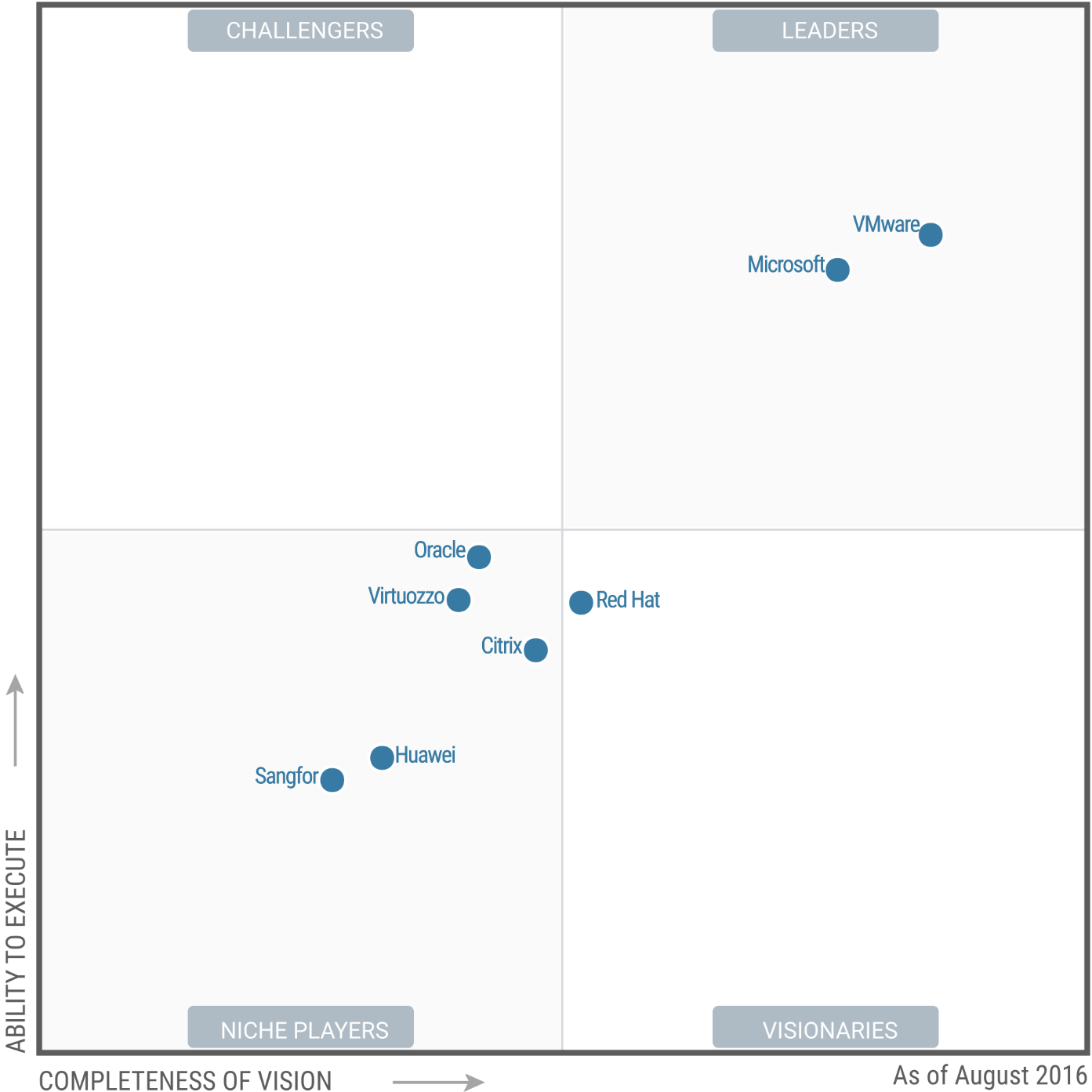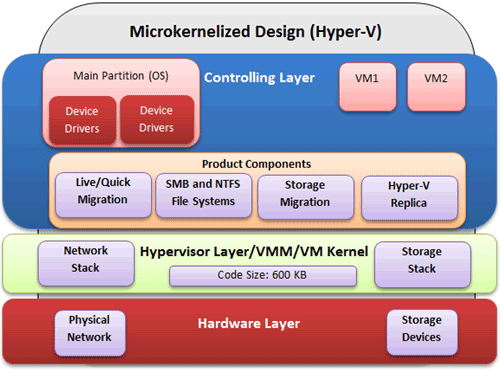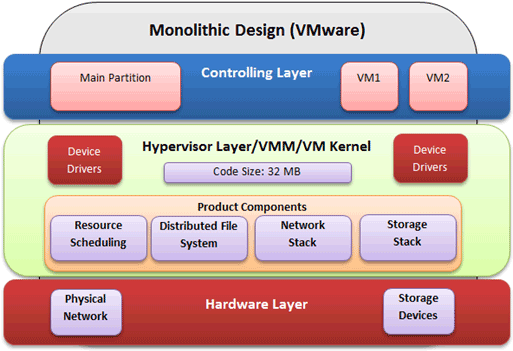The world of virtualization has been a dynamic force pushing businesses in the right direction. Over the past decade, multinational organizations that have embraced virtualization have reaped the benefits of the highest levels of application performance while keeping costs in check. Virtualization platforms enable high-application availability and high-speed operations that keep the Big Data engine oiled.
Performance monitoring and capacity monitoring have become the two pillars of IT success, especially for organizations dependent on dozens of apps, CRMs, ERPs, interfaces, portals, and more. This is precisely how virtualization technologies such as VMware vSphere with Operations Management have stepped ahead of competitors, and enabled gigantic organizations to leverage IT as an enabler.
If your organization is contemplating embracing the virtualization wave, or looking to move on to a better virtualization platform than what you use currently, this guide is for you. We have explored the five success factors of a winning virtualization platform. Here are our findings.
Evaluating platforms
Your choice of a virtualization platform is, inarguably, the most critical decision you need to take in your organization’s virtualization journey. Here are three parameters to judge any virtualization technology on (these are business relevant and not tech-centered):
- Proven technology: Virtualization platforms use different technologies to deliver virtualization solutions. For organizations making their first move into the domains of virtualization, the best way to assess it is to study the industry ratings for these platforms. Market research firms like Gartner release yearly reports on the best groundbreaking technologies, and you’ve got to think of the platforms that manage to secure a position in the leaders quadrant inside Gartner’s Magic Quadrant. Microsoft and VMware are regular leaders of the market, ahead of Oracle and Citrix by significant market share (as indicated by 2016 release of Gartner’s Magic Quadrant for x86 server virtualization).

- Widely used: If a significant number of Fortune 100 companies use a virtualization platform, you can trust it, too. A better option, however, is to segregate the Fortune 25 for your industry, and understand which virtualization technology is used by these organizations (with the same IT transformation vision and requirements as your organization).
- Widespread vendor support: Market giants such as VMware (VSphere) and Microsoft (Windows Server 2016 with Hyper-V) support more than 5,000 software applications, and support more than 2,000 vendor ecosystems. If your organization is already a heavy user of Microsoft software, you receive some advantages by sticking with Microsoft’s virtualization product.
The right choice of virtualization platform makes your organization future ready, and lowers the payoff periods for virtualization implementations. Not a bad deal! Now if we could just back to when we had a 99-cent Whopper!
Reliability
As a CIO, chief technology officer, virtualization architect, or IT lead, you want the confidence and reliability that a known, proven effective, and time-tested computing architecture provides. A successful virtualization journey depends a lot on how reliable it is. To this effect, making decisions in favor of tools and technologies that are designed and built from the ground up to suit virtualization is the best way forward for organizations.
For instance, given a choice between a virtualization tool that is designed from the ground up vs. one that adds a hypervisor bolt-on to an operating system to achieve virtualization, going with the former is the smart choice. Platforms such as VSphere interact directly with underlying hardware instead of routing the communications through the general purpose operating system layer.
In fact, platforms that use an OS+hypervisor approach are technically exposed to all the risks that the core OS is vulnerable to. Microsoft’s Hyper-V uses a micro-kernelized design, with minimal attack surface because the API is kept out of the design. This is a pretty close match in reliability and safety to VSphere’s monolithic no-operating system design.


Licensing provisions
Licensing inclusions and support of a virtualization platform govern the scalability and long-term expenses associated with it. Industry leaders VSphere and Microsoft Hyper-V have been going head to head in terms of making their products lucrative for organizations on a licensing front. The parameters to keep in mind as you weigh your alternatives are:
- Number of physical CPUs supported per license; number of managed OSEs supported per license
- Number of Windows server virtual machines supported licenses granted per host
- Antivirus and malware included
- Number of full SQL database server licenses for management databases
- Web-based management console
Effective disaster recovery
Disaster recovery is ignored at one’s own peril, especially in the IT sphere. Jack Bauer knows about that, too! Just watch “24”! Too bad Kiefer Sutherland has chosen not to finish out his character, which is really pitiful, but this is another topic. Your virtualization journey could go all wrong if not accompanied with diligence in terms of disaster recovery.
For starters, look for platforms that consider disaster recovery, data security, and backup as core components of their parent virtualization technology, instead of pushing them as separate bolt-ons that come at a cost. Strategies such as copying of virtual machines to physical hosts within clusters, and making these backup copies available when needed for restoration purposes, are being adopted in leading virtualization platforms.
Business continuity functionalities and disaster recovery are also offered as specialized services by these providers. Ideally, you’d want to avoid any expenditure on software and infrastructure needed for disaster recovery, and manage the same right from the virtualization platform.
Adding value
Here’s a fact: Organizations don’t really care about the routers, switches, servers, product names, technological breakthroughs; what they want is their tech tools to be available 24/7, perform super-fast, and get smarter over time. This brings the “service concept” into the picture for your organization’s virtualization path.
Who wants to work with something that failed to improve over time? It is tremendous to work with something flexible.
Going with virtualization platforms that have been in business for years, and known to deliver sensational service along with a stellar product, are worthy of a share in your organization’s IT budget.
Microsoft’s System Center is a perfect example of how IT vendors are understanding this concept, and giving a service face to their offerings. Monitoring, automation, self-service, cloud enablement ― these are the services that bring immediate value and positive change in user experiences for organizations. Look for virtualization technologies that are aligned to this fundamental service concept. It is pretty rational, right?
Photo credit: Wikimedia



